Your guide to customisable, 3D-printed lighting
Written by
25 June 2024
•
5 min read
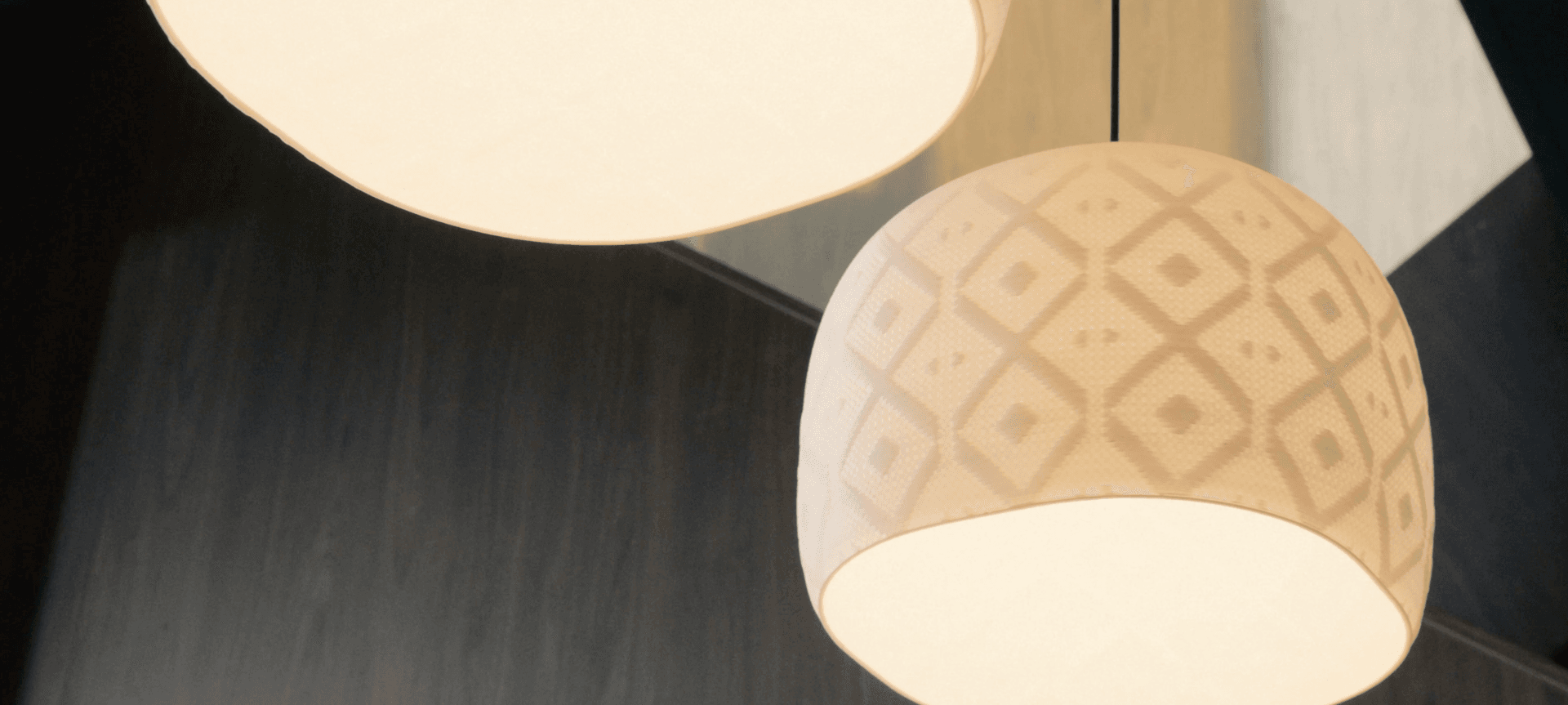
Lighting is part of our everyday lives. It forms an integral part of both residential and commercial projects, and the options are endless – whether it be for pendant lighting, lamps, ceiling lights, or everything in between.
A world leader in lighting, Signify is consistently working on its transformation as a sustainable company.
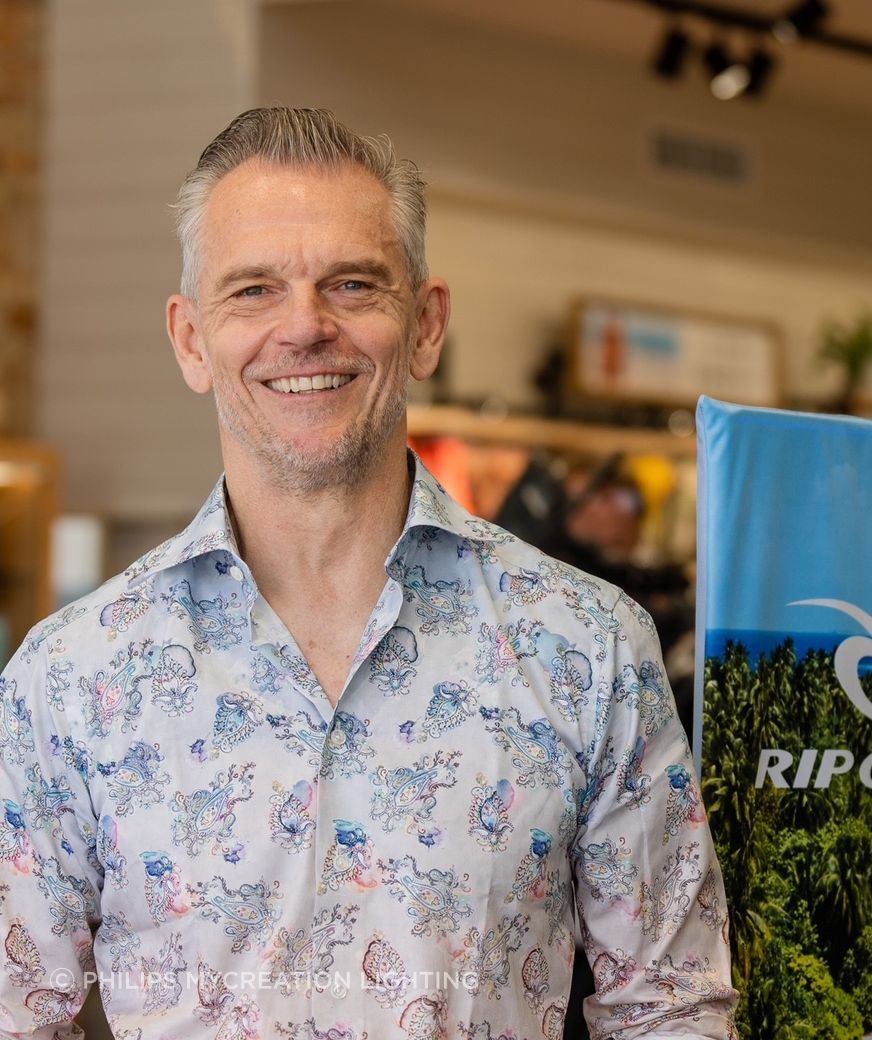
“Sustainability is central to everything that we do as an organisation and we are deeply committed to reducing CO2 emissions as part of our efforts to combat climate change,” says Jonas Olander, product manager at Signify Australia.
“As a lighting company, one of our more obvious routes to providing sustainable solutions has been through innovation in the energy-efficient LED technology space – ultimately to reduce power consumption. Another more recent approach is the process by which we produce our Philips MyCreation 3D-printed luminaires.”
3D printing is one of the technologies emerging from the need to reduce waste and move away from using virgin raw materials as feedstock. It’s a revolutionary concept that is being seen more and more. For Philips MyCreation, a Signify brand, 3D-printing technology enables the sustainable creation of lighting that reflects personal styles, personalities and brand identities.
A highly flexible, more sustainable form of manufacturing where luminaires can be made with material that has already been recycled, tailored to the customer’s exact needs and recycled again at the end of their life, 3D printing allows Philips MyCreation to avoid the use of 100 per cent virgin materials for the 3D-printed parts of its lighting solutions. Thanks to their simple design and ease of disassembly, nearly every component in Philips MyCreation’s 3D-printed luminaires can be reused or recycled, supporting the concept of a circular economy.
There are a few ways in which these remarkable lighting designs are manufactured to keep them as sustainable as possible.
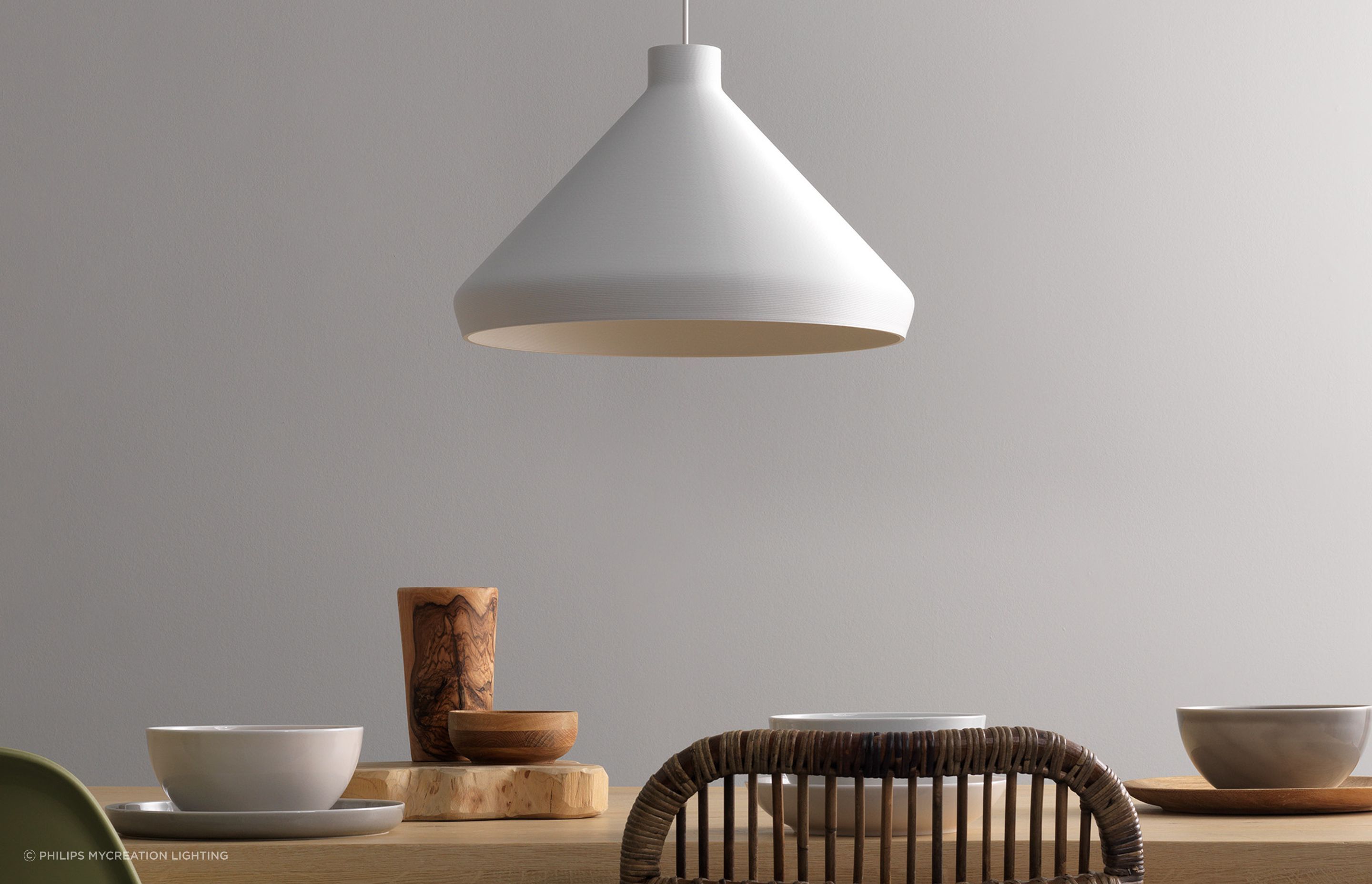
Using recycled and bio-circular materials
“Firstly, we produce all printed parts with at least 55 per cent recycled or mass-balanced bio-circular plastics,” says Olander.
The entire supply chain of Philips MyCreation products, from granulate and filament to luminaire production, is ISCC Plus certified (International Sustainability and Carbon Certification) and even waste materials such as 100 per cent recycled water bottles, like the large ones commonly used in offices, are given a second life in manufacturing.
Printing on-demand in Australia
“We also produce locally in any quantity required for a particular project, with short production times. Because printing takes place on-demand, there is no over-production leading to unsold stock and potential wastage.”
Rejected parts are also recycled by the in-house recycling unit so that these materials can be reused.
Fewer components for more flexibility
“Additionally, to reduce product complexity, our 3D-printed luminaires include up to 40 per cent fewer components when compared to conventional manufacturing methods,” says Olander.
This is one of the advantages of 3D printing manufacturing – the integration of multiple functions into a single component.
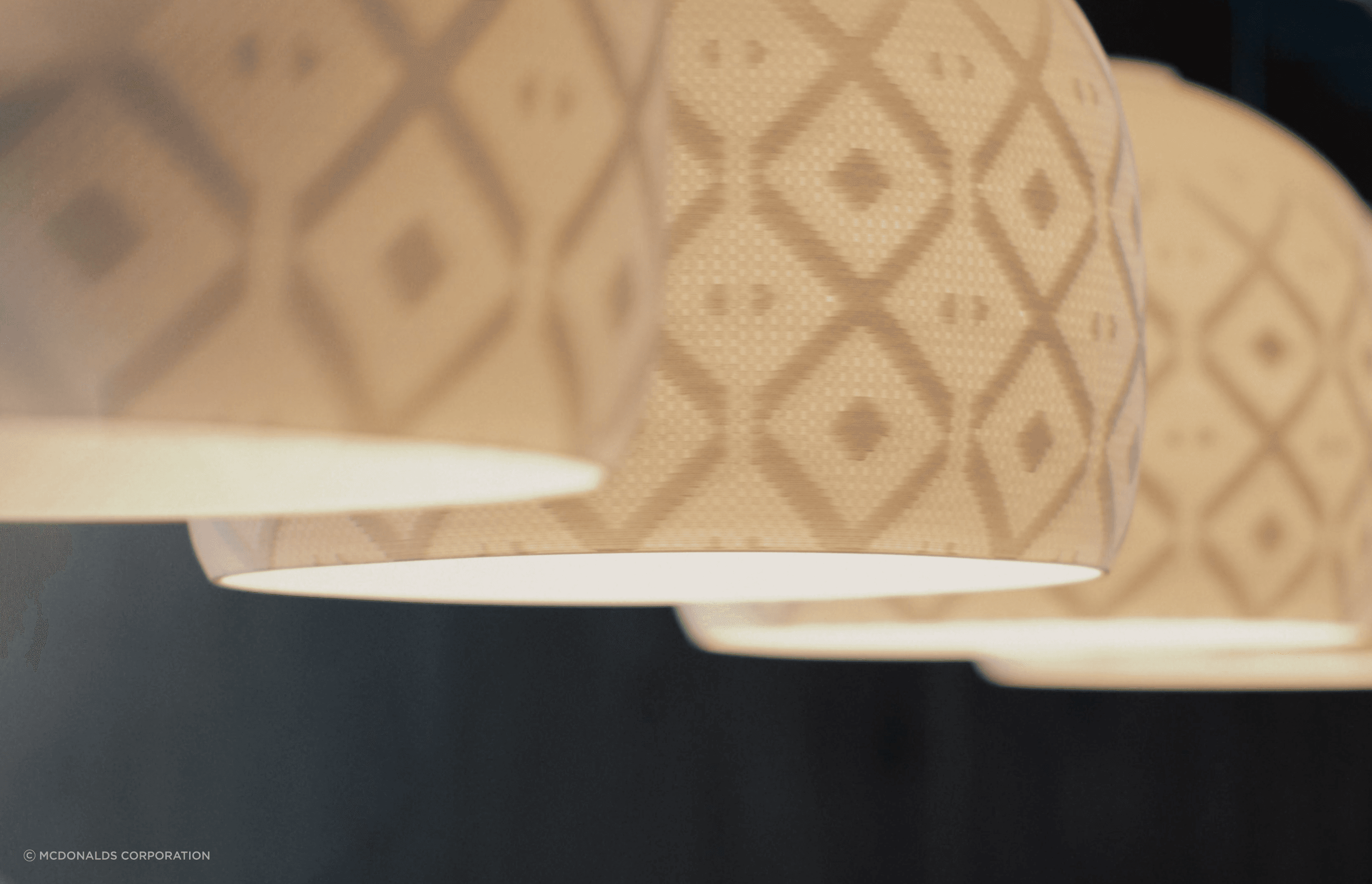
How to design a custom 3D luminaire with Philips MyCreation
An impressive advantage of 3D printing manufacturing over conventional lighting solutions is the design flexibility.
“It is exceptionally easy to visit the Philips MyCreation website and via the built-in configurator, create unique and tailored customer lighting experiences,” says Olander. “There are many different luminaire shapes, colours, textures and specifications to choose from which can be mixed and matched to produce an ideal design to complement virtually any space.”
For high-end projects, interior designers and customers can work with Philips MyCreations’ specialist designers through the ‘co-creation’ process to create designs that are unique, decorative and functional.
“We’re even able to imprint a company logo or a unique brand element for added exclusivity. By clients sharing their project vision and inspiration with us, we’re able to create draft sketches, consult with them to finalise preferred designs, render the outcome, and finally add prices and specifications. As soon as we have complete customer satisfaction and approval, we’ll proceed with producing a prototype and begin the production run for the project.”
Designing with 3D printing technology for your clients allows you to consider both the lighting requirement and the aesthetic appeal. “That’s the beauty of Philips MyCreation, there’s always a design to perfectly match both,” says Olander.
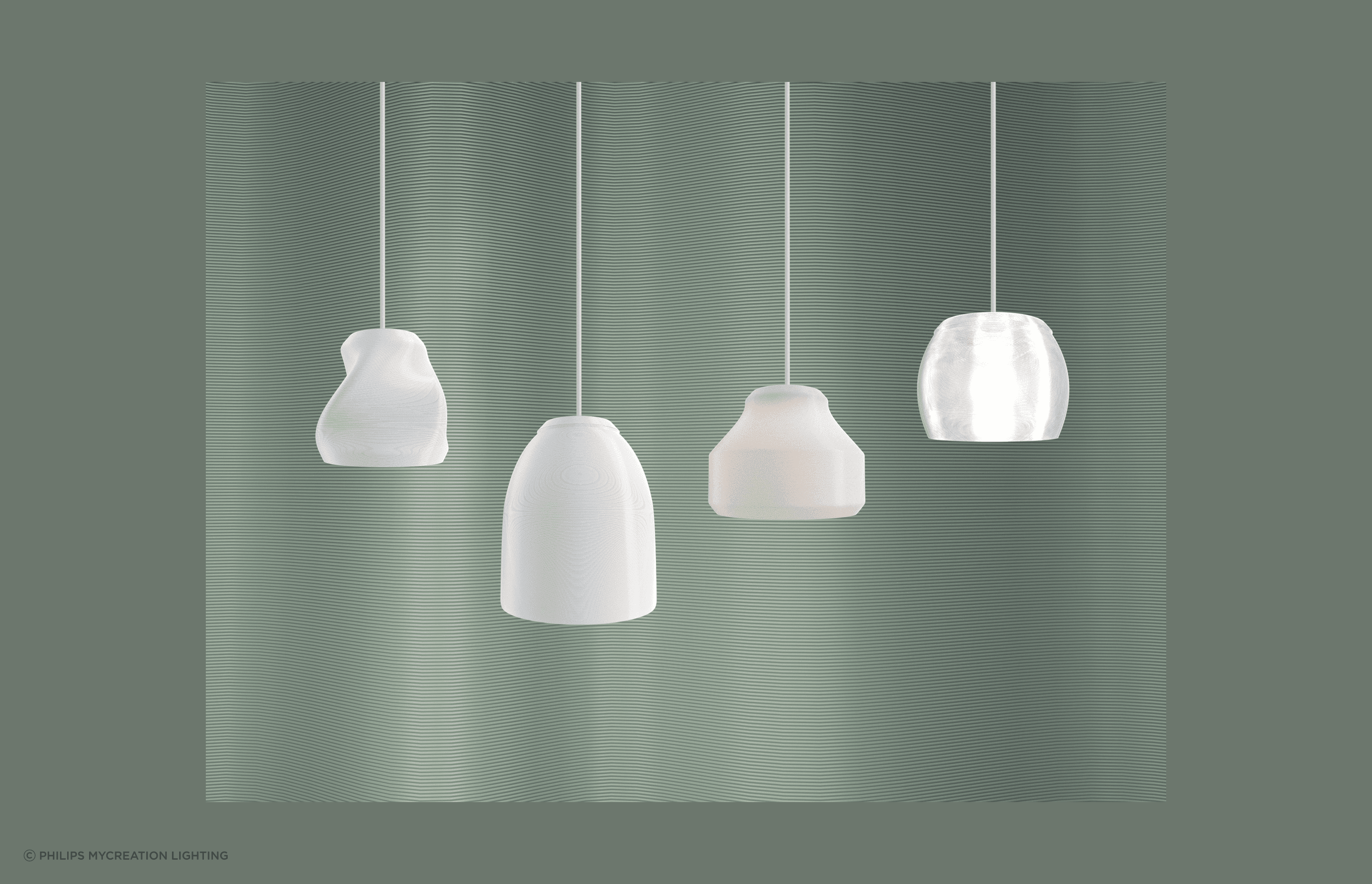
Sustainable design is no longer a ‘nice-to-have’ in the built environment. Minimising energy consumption, selecting eco-friendly materials with high recyclability, socially responsible sourcing, carbon footprint reduction and navigating complex regulations are just a few of the expectations now placed in the hands of architects and designers to reduce negative impacts on the environment. By offering its customisable 3D-printed lights, Philips MyCreation hopes to make this easier.
“Philips MyCreation 3D-printed lighting provides architects and lighting specifiers with instant sustainability benefits and assurances. These are supported by Environmental Product Disclosures (EPDs) which are available for many of the product portfolios,” says Olander.
Beyond sustainability, this technology also brings more opportunities to elevate spaces with personalised solutions – whether the requirement is simply a colour-matched fitting or the development of a truly bespoke luminaire that will bring wow factor.
“There is an immense satisfaction that comes from being able to create exactly what customers were hoping for,” says Olander. “Whether it’s for bright lighting in supermarket aisles, creating comfortable and productive office spaces, creating memorable experiences for hotel guests, or for that unique ambience in a restaurant, Philips MyCreation 3D-printed lighting offers a solution for every space.”
If you’d like to learn more about Philips MyCreation’s 3D-printed lighting solutions, reach out to the team so they can help create exactly what you’re looking for.